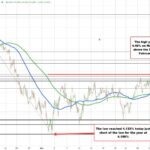Navigating Turbulence: The Latest on Canada-U.S. Trade Relations
Tháng 4 1, 2025
US 10-Year Treasury Yield Drops to 4.148%: What Every Investor Needs to Know
Tháng 4 1, 2025The Impact of Trump’s New Tariff Announcements: What to Expect
As the global economy continuously evolves, the strategic moves made by national leaders hold significant implications for international trade dynamics. Recently, the White House has placed heightened attention on how nations are responding to President Donald Trump’s impending announcement regarding a new set of country-based reciprocal tariffs, slated for April 2. This initiative aims to counteract trade barriers imposed by other countries, particularly focusing on tariffs levied by the European Union, Japan, and India.
Details Surrounding the Tariff Announcement
President Trump, known for his bold trade policies, will formally reveal this reciprocal tariff strategy during a White House event. The underlying rationale for imposing these tariffs is to equalize the playing field for U.S. imports, which have faced higher tariffs abroad. By matching these duties, the administration hopes to reinforce its commitment to reducing trade barriers and stimulating domestic industries. This approach indicates a significant shift in U.S. trade policy, with broader implications for international economic relations.
Economic Implications of Tariffs
Economic analysts have raised alarms regarding the potential repercussions of President Trump’s tariff announcements on American consumers. As these tariffs could lead to increased costs for imported goods, there is widespread concern that U.S. consumers might face higher prices and reduced purchasing power. This can result in lower income levels, which could, in turn, dampen consumer spending – a critical driver of the U.S. economy. Moreover, despite these warnings, President Trump remains resolute in his belief that the introduction of tariffs could incentivize increased domestic investment and job creation in the long run.
In this context, it’s essential to consider how other nations are reacting to these developments. For instance, China has been taking strategic steps to adapt to changing trade tensions, particularly with the U.S. This includes initiatives to engage with global CEOs to promote international collaboration. In light of this, you can read more about China’s commitment to being a favorable investment destination and its role in global trade amidst these challenges here.
Global Reactions to the Tariff Policy
The international community is closely monitoring these developments as many countries perceive Trump’s tariffs as potentially destabilizing to the global economy. Canada and the European Union have signaled that they are prepared to respond with their own retaliatory measures. This tit-for-tat approach can escalate trade tensions, leading to a protracted conflict that could disrupt established economic relationships and further complicate global trade networks.
Market Sentiments Amid Trade Uncertainty
In the wake of these tariff threats, Asian markets have reacted negatively, reflecting growing uncertainty about future trade relations. Stock valuations have dipped as investors weigh the risks associated with ongoing trade disputes. The market’s response underscores the interconnectedness of global economies, where decisions made in the United States can have ripple effects across various regions.
As the date of the anticipated tariff announcement approaches, the economic landscape both domestically and globally remains in flux. Stakeholders in international trade are urged to stay informed and prepared for the evolving scenarios that could arise from President Trump’s policies. The outcomes of these tariffs could significantly reshape the framework of trade relations, highlighting the need for strategic foresight in navigating the complexities of global commerce.
In conclusion, while the motivation behind the reciprocal tariffs aims to secure a fairer trade environment for the U.S., the potential consequences on consumers, international relations, and market stability reveal a multifaceted challenge ahead. The coming weeks will be critical in illustrating how these trade policies will unfold and their impact on the wider world economy.
